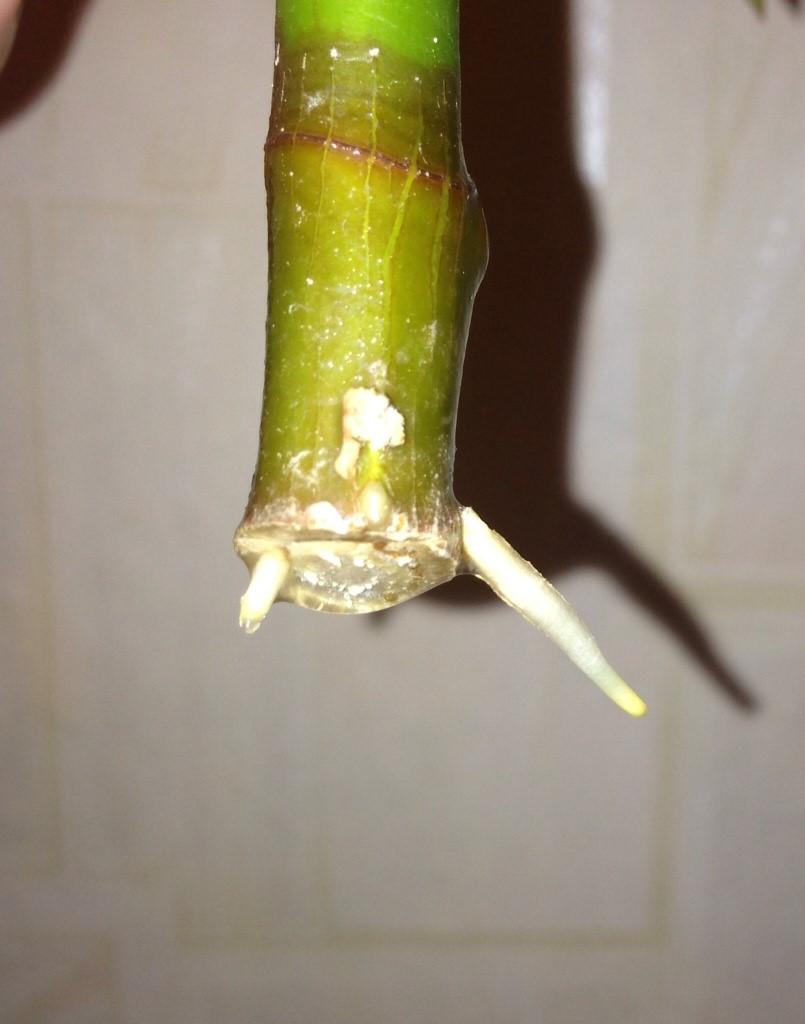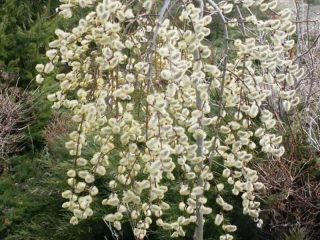Content
Propagating willow by cuttings is the most affordable and easiest way to grow a deciduous tree. Planting technology depends on the varietal characteristics and the nature of the soil. Before you get started, you should familiarize yourself with some nuances.
Features of cuttings of different varieties
Weeping willow can be propagated not only by cuttings. Gardeners also practice other methods, such as grafting or cultivation from seeds. Therefore, it is important to study how a particular variety relates to this.
It is easier for dwarf varieties, in particular globular willow, to germinate cuttings. To do this, shoots 12-16 cm long are selected. White willow, a fairly large variety, is also propagated in this way. However, cuttings are selected twice as long.

If the owner has selected powerful cuttings for propagation, the willow will grow strong and voluminous roots
Botanists recommend propagating purple willow by layering. Goat willow tolerates vaccinations better. There is no need to rush into planting; it is better to get to know the plant a little closer.
Weeping willow supports propagation by cuttings and seeds. Gardeners use the former because the process is simple and quick. If you enjoy watching it grow, you can plant a few seeds. But you need to be prepared that some of them will not sprout.
When to take cuttings
Willow propagation is carried out in the fall - in September or October. The main criterion is temperature. If there is short-term cold outside, planting is postponed until a favorable temperature occurs.
You can plant willow cuttings in the spring. To do this, the material is wrapped in a damp cloth. Periodically, it is moistened again so that the plant has the necessary liquid. The willow is placed in a cold place and awaits the onset of April.

As practice shows, the best survival rate of willow occurs in the spring; propagation by cuttings is successful in 95% of cases
Growing willow from cuttings
Regardless of the variety, willow cuttings are planted using general technology. But before this, the material should be inspected and processed.
Selection and preparation of cuttings
There are two harvesting methods, where the roots can be open and closed.
The first is for dwarf varieties. Typically, the roots are open on seedlings wrapped in a package or on temporarily buried specimens. Such propagation is not used for white willow.
The material is prepared as follows:
- The future willow is being examined. Damaged cuttings are not allowed to propagate. The same applies to raw materials covered with mold, mildew, or stains.
- After external inspection, the material is dipped in hydrogel. This will protect the root system from lack of water. Willow is planted in October or April.
How to plant willow cuttings
For beginning gardeners, common willow is a good choice because it is easier to propagate. In this case, the material takes root with a probability of 80-85%.As for decorative varieties, certain instructions are followed.
Willow from cuttings is grown at home according to the following scheme:
- Thick willow twigs are cut, forming segments of 15-25 cm (depending on the variety). In this case, at least five buds are left on each sample. An oblique cut is made from below, and a straight cut from above.
- The upper cut is treated with paraffin or pencil glue, or can be wrapped in film. This is necessary to protect against infections and retain moisture.
- The foliage is cut from the cuttings, leaving 1-2 leaves at the top. The willow is placed in a jar of water. There the cuttings should stand for 15 days. The fluid is changed 2-3 times a week. The best place for storage is a warm room with moderate lighting.
- Several holes are made in the pot so that water can pass through them. The container is filled with a nutrient substrate (store-bought soil works well). The cuttings are deepened to half the height, trying to place the root shoots as widely as possible.
They are grown in a pot for 30-40 days, after which they are planted in a permanent place.
If the weather is favorable, reproduction is carried out in open ground. Green twigs are torn from a branch with an old piece. In summer, shoots take root more slowly than in winter. Therefore, growth stimulants are used.
You can grow a willow from a twig in open ground like this:
- The shoots are cut to a length of 15-25 cm, cleared of green vegetation and placed in a rooting solution. Depending on the product, the willow seedling is kept for 4-10 hours. If it is not there, store it in a jar with plain water for 15 days.
- Dig up the area with a shovel, deepening the sharp end by 50 cm. Sand and organic fertilizers are sprinkled on the bottom. Willow cuttings are placed at an acute angle - like garden roses. To prevent the samples from falling, they are tightly covered with earth.
Aftercare
Willow is an undemanding crop. Any beginner can cope with cultivation. The plant is watered regularly. It is good if it grows near a river or lake. To prevent moisture from accumulating at the roots, take care of the drainage system before planting, otherwise purple spots will appear on the shoots of the seedling, indicating root necrosis.
It is easier to plant willow from a branch in the spring, when warm weather has settled. In summer, the plant is freed from weeds. Dwarf varieties are trimmed twice a year - in June and October. It should be borne in mind that not all types are winter-hardy. For example, in Russia it will not be possible to grow Babylonian willow.

When propagated by cuttings, willow will form root shoots on the trunk; they are deepened into water half their length
The common willow rarely suffers from disease; it has a strong immune system. Once every 2-3 years it can be bothered by powdery mildew. Symptoms indicating the appearance are white bloom and yellowing of the foliage. The fungus reproduces quickly - if other crops grow nearby, the parasite will spread to them.
When black spots appear, treat with fungicides. This is how black spot manifests itself, another infectious disease.

Black spot prefers moisture, so watering is carried out at the root, trying not to get on the foliage
After reproduction, the willow can be attacked by insects: flower flower, leaf roller, aphid. If there are few pests, spray with potassium permanganate.

In case of serious damage, insecticides are used
In the first season, willow requires up to 30 liters of water. Mature trees receive most of their moisture on their own - from precipitation and groundwater. During periods of drought, a gardener should help. Water in the morning or evening when the sun has gone down.
Fertilizing is applied twice a year - in spring and autumn. The first is necessary to accelerate development, the second to adapt to the upcoming cold weather. They use complex fertilizers; willow especially loves organic matter.

When propagating by cuttings, keep a distance between willows; as they grow, they are planted further so that the trees do not create shade
Do not despair if by next year the crown has not acquired the desired shape. This takes 5-7 years. Immediately after reproduction, the willow actively develops and increases in height; mature trees grow more slowly.
Wire will help improve the appearance of the plant. The branches are bent in the desired direction and fixed. The main thing is not to overdo it with pressure and not damage the shoots. When the tree remembers its shape, the wire is removed. In winter, the material is replaced with rope - frozen metal deforms the bark.
You can adjust the willow crown in another way. When pruning, the top bud on the branches is cut off and the ends are shortened. Instead of growing vertically, the tree will increase in volume. This technology is useful for those who want to grow spherical willow.
Conclusion
Propagation of willow by cuttings is practiced in all corners of the planet. This is the most popular method, which gives good results and does not require special knowledge.Before planting, cuttings need to be inspected and prepared. The culture is unpretentious, so there are usually no problems with care.
















